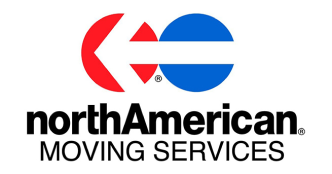
Employer-Paid Moving Expenses: Are They Taxable?
In this article, we will explore the question of whether employer-paid moving expenses are taxable. We will examine the rules and regulations surrounding the taxability of such payments, including the criteria that must be met for expenses to be considered non-taxable.
We will also discuss the different types of expenses that can be covered by an employer, including transportation, lodging, and meal expenses. Additionally, we will look at the documentation requirements and record-keeping procedures that must be followed to ensure compliance with tax laws.
Whether you are an employer looking to cover relocation expenses for your employees or an employee in the process of relocating for work, this article will provide you with valuable insights and guidance on navigating the tax implications of these arrangements. By understanding the rules and regulations surrounding employer-paid moving expenses, you can ensure that you are making informed decisions and avoiding costly tax mistakes.
How To Handle Relocation Expenses for Your Employees
Moving expenses are not tax-deductible. That could change after 2025, unless lawmakers make changes to tax law.
Relocating for business reasons can be difficult—and expensive—for an employee. That’s why many employee moving expenses are paid by employers. Here is a look at how the process of paying employee moving expenses works, including what’s deductible to you as a business, how to document these payments, and how to report these expenses on employee W-2 forms.
Key Takeaways
- Moving expenses were once tax-deductible for employees, but that deduction was removed in the 2018 tax year.
- Businesses can deduct an employee’s moving expenses as a business expense if they’re included in an employee’s standard W-2 wages.
- Barring further changes to tax law, moving expenses will once again become tax-deductible in 2026.
Tax Law Changes and Moving Expenses
Reimbursements by your business to employees for moving expenses are considered fringe benefits. These benefits are taxable wages to the employee, and they must be included in calculations for federal income tax withholding, FICA (Social Security/Medicare), and federal unemployment tax. Even if you have a company policy that requires employees to keep track of payments and give back excess amounts, these payments are still taxable to the employee.1
The Tax Cuts and Jobs Act (TCJA) changed deductions for moving expenses for employees, effective for the 2018 tax year through 2025. This law suspended the deduction for unreimbursed business expenses, including moving expenses.2 These expenses aren’t deductible to the employee on Schedule A under TCJA, and it also affects owners of C corporations and S corporations who work as employees of the business.
If your business treats employee moving expenses as taxable (W-2) wages for the employee, your business can still deduct the cost of these expenses as a business expense. Businesses can generally deduct employee pay in any form.3
Note
Just to be clear, from 2018 through 2025, all employee moving expenses paid to employees by your business are taxable to the employee. Unreimbursed employee moving expenses can’t be deducted by the employee as miscellaneous expenses. Your business can still deduct these payments as business expenses.
How To Reimburse Employees for Moving Expenses
In general, any payment you make to an employee is taxable to the employee, and paying for an employee’s moving expenses is considered a taxable benefit. The 2017 tax law didn’t change this tax situation, but it took away the possibility that employers can reimburse using an accountable plan (explained below) to avoid having the employee pay income taxes on these payments.4
It’s a good idea to follow the accountable plan process to document employee reimbursements so you can avoid problems in an audit.
Under a reimbursement plan, the employee pays for the expenses and you reimburse them. The expenses must be itemized and only specific expenses may be paid. The expenses must also be for business purposes.5
The employee must have paid or incurred expenses while performing services as an employee of your company. You may need to document that the move is required by your business. Some accounting procedures must be followed.
- The employee must “adequately account for these expenses within a reasonable period of time.” That is, the employee must give you receipts for all expenditures.
- If you are giving the employee an advance on these expenses, the employee must return any excess money within a reasonable period of time.6
For example, let’s say you advance $5,000 for moving expenses and the employee gives you receipts for $3,650. The employee must give you a check for the balance ($1,350). If all of the criteria for an accountable plan are not met, the plan is not an accountable plan. And “reimbursements for nondeductible expenses” (to the employee) and allowances for miscellaneous or unspecified expenses are taxable to the employee.
Payroll Taxes and Moving Expense Payments to Employees
Employee moving expenses paid by your company, even if you have an accountable plan, are subject to withholding for federal income taxes, FICA taxes (Social Security and Medicare), and federal unemployment taxes.1 You must report the amount of this benefit when you complete the W-2 annual tax report for the employee for the previous year.
To clarify how these expenses are entered on an employee’s W-2 form. We’ll use the example above, where the employee receives $5,000 for moving expenses, has receipts for $3,650, and keeps the remaining $1,350. The amount the employee keeps is taxable to the employee. We’ll assume this payment is done under the requirements for an accountable plan, as described above:
- The taxable $1,350 is included in Box 1 of the W-2 (and in boxes 3, 5, and 16, if taxed by the state or city).
- Federal and state income tax withholding and FICA taxes must be calculated for the taxable $1,350 and included in the appropriate boxes on the W-2.
- You must include the $3,650 (the amount equal to the substantiated amount (for example, the nontaxable portion) in box 12 of Form W-2 using code “L.”
Giving an Employee Extra Money for Moving Expenses
Some businesses give employees a set amount for moving expenses, depending on the type of move and the distance. The payment may still be deductible to your business as a business expense.
If you want to give an employee the money for moving expenses and let the employee decide how this money will be spent, you have a nonaccountable plan, according to IRS regulations. In this case, as noted above, if you don’t want the employee to have to show receipts, all of the payment is taxable to the employee as a benefit.1 In addition, federal income tax and FICA tax must be withheld on the payment.
Note
Payment of employee moving expenses is a deductible business expense to your business.
Tax Gross-Up
Tax gross-up refers to an employer increasing pay to an employee to offset the impact of taxes. To calculate it, you’ll need to estimate the income tax on the employee’s wages, then add that percentage to the total payment.
For example, if an employee pays about 22% income tax, and you want to give them a $3,000 bonus (after taxes) to help with moving expenses, then you multiply 3,000 by 0.22. That gives you a tax payment of $660. In this example, the tax gross-up would result in a total payment of $3,660.
Note
Employers don’t have to gross-up bonuses.
Telling Employees About the Moving Expense Reimbursement Plan
It’s always a good idea to put this type of benefit in writing and to include it in your communications with employees. Your employee handbook or policies and procedures manual is a good place to describe the plan. Don’t forget to include information about the tax implications of this benefit.
Helping Employees With Their Moving Expense Deductions
Unless you are a qualified tax preparer, you should not be giving tax advice to employees about income taxes. Encourage your employees to get professional tax advice or use professional tax software. Here are some things you can do to help employees understand this moving expense benefit and how it will affect their taxes:
- Give employees a job relocation package that explains how and when moving expenses will be reimbursed by your company.
- Give employees the opportunity to change their withholding (on Form W-4) to account for the relocation benefit and their tax liability.
IRS Information About Employee Moving Expenses
IRS Publication 15 – Circular E – Employer’s Tax Guide
IRB Publication 15b – Employer’s Tax Guide to Employee Benefits
Frequently Asked Questions (FAQs)
Are moving expenses tax-deductible for employers?
Yes, moving expenses are tax-deductible for employers as a business expense if they include the reimbursement in the employee’s taxable wages.3
What are qualified moving expenses?
Qualified moving expenses are any amount directly or indirectly received by an individual from an employer as payment (or reimbursement) for expenses that go toward moving household goods and personal effects from a former residence to a new residence (including the expenses of lodging en route).8 The new place of work should be at least 50 miles from the former place of work or former residence.9
Want to read more content like this? Sign up for The Balance’s newsletter for daily insights, analysis, and financial tips, all delivered straight to your inbox every morning!


